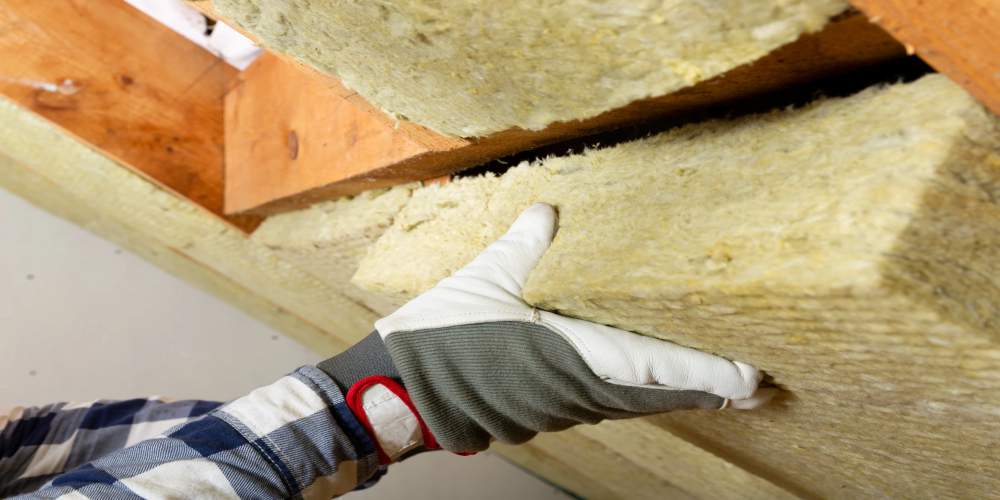Read Time : 2 Minutes
How does Insulation work
Thermal insulation is a means to prevent heat loss or heat gain by creating a barrier between two areas that are different significantly different in temperature. Buildings need help to keep them energy efficient by using the different insulation options available. By using insulation in your home you can reduce heat loss during cold weather and also keep your home cool during periods of warm weather while also reducing your costs.
Insulation is not designed to keep the cold out but to slow the loss of heat from the building or components like pipes. Buildings can be insulated by using materials that are themselves insulated or buy leaving gaps in ceilings and walls which can then be filled with insulating material. The main areas that you should consider for insulation are the roof, walls, windows, doors and floors.
You should also consider that you cannot completely eradicate heat loss but you can eradicate a large proportion of the loss of heat form you home by using insulation. There are many different factors which can affect the amount of heat lost in the home like heat being lost through shared walls with adjoining buildings or through the floor in a flat for instance.
In a typical house as much as 30% of your heat can be lost through the walls and 25% through the roof. In the majority of cases installing insulation will not require planning permission but some exceptions may be if you live in a conservation area or you want exterior insulation fitted to your property. Different types of insulation will be given an R-value to rank its effectiveness at retaining heat in the property.
 |
 |
COMPARE PRICES FROM LOCAL INSTALLERS
Compare prices from local companies fast & free
Enter your postcode to compare quotes from leading professionals. We promise to keep your information Safe & Secure. Privacy Policy
Insulation material will have a similar structure to wool and works by trapping pockets of air and is suitable for fitting between standard spaced beams and joists. A common insulation material is the mineral and fibreglass wool which comes in rolls or batts.
Fibreglass wool is an extremely strong robust material which is also light weight and flame resistant with heat retaining properties making it perfect for insulating buildings. Some other variations of blanket wool insulation are mineral wool, plastic fibres and natural fibres. The fibreglass and mineral wool comes in higher density form for greater efficiency.
Another way to insulate a building is to place the insulation in the exterior or interior of the foundation walls. Sometimes the foundation blocks can be filled with insulation like polystyrene or foam inserts. Typically a system incorporating insulated concrete blocks would be suitable for new build rather than being incorporated into an existing structure. For an existing structure foam board or rigid foam would be a more suitable option and can be used to insulate you whole property from the roof to the foundations.
 |
 |
One of the other more common forms of insulation is loose-fill and blown-in cavity wall insulation. Loose-fill takes the form of small particles that form a material that can conform to any space without disturbing structures.
The most commonly used material for this type of insulation is cellulose, fibreglass and mineral rock wool which are all produced from recycled material. Loose-fill will typically be installed in wall cavities and attics. Sprayed foam is also a common insulation and works in a similar way with liquid foam being poured or injected into place into wall cavities making it very versatile. Sprayed in foam is installed using a foaming agent and will expand and become solid as the mixture cures. Slow curing foams are available which will flow around any obstructions inside the wall cavity before hardening.
Structural insulated panels are prefabricated panels that can be used in wall, roofs and floors. They offer excellent insulation in comparison with traditional methods and have a high R-value. They typically consist of 4 to 8 inch thick panels that are made to fit in a factory then shipped to the site and can be made to various sizes. A structural insulated panel would ideally be used in a new build property.
Insulation Efficiencies
The presence of insulation can cause your property to become dramatically more energy efficient. The National Insulation Association claims, for example, that installing roof insulation alone can save 15% of a home’s annual heating bills.
The efficiency of insulation varies immensely between type, thickness, manufacturer and installation quality. If, for example, you squash the insulation material during installation, this will cause it to be less effective.
The Energy Saving Trust has compiled a list of products which they deem to be of high performance. Check out there website here for further info.
Find a local installer
Welcome to the biggest directory of UK renewable energy companies





 Types of Insulation
Types of Insulation







